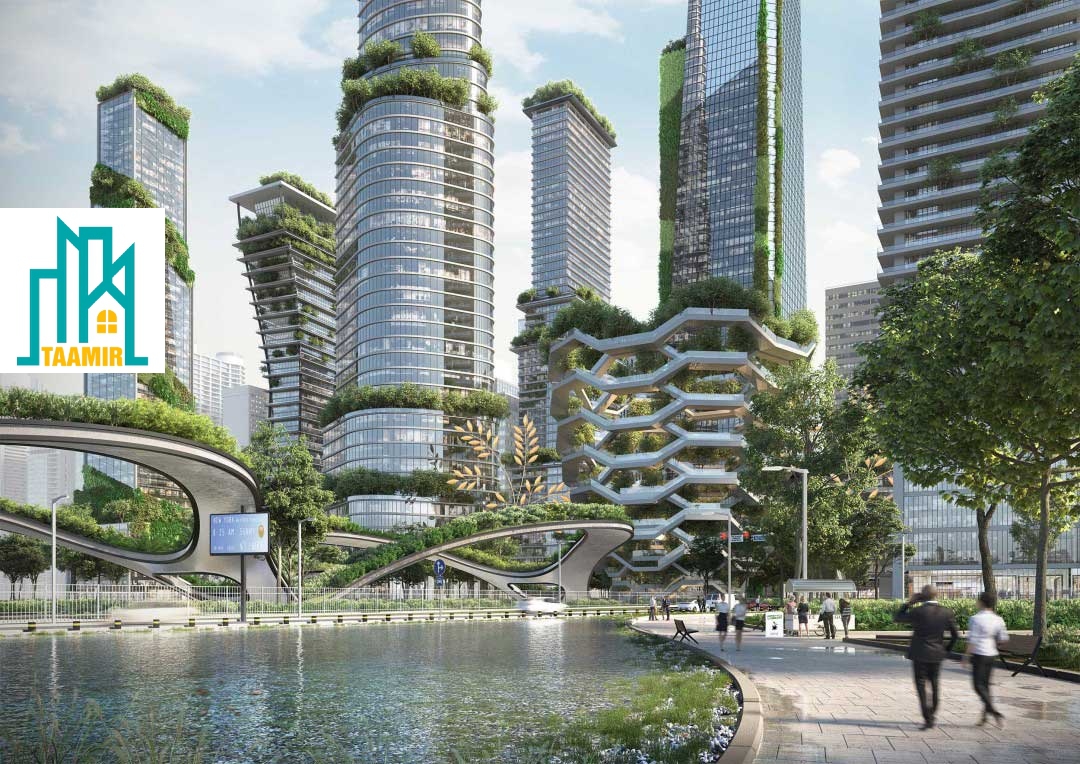The first time Ali stepped into the grand office lobby, he felt something different. It wasn’t just the polished floors or the glass façade reflecting the city skyline—it was the way the space felt solid, built to last. Years later, as he sat in a conference room discussing plans for his own commercial venture, he wondered: What truly makes a commercial building stand the test of time?
The Foundation of Every Structure: Planning and Design
Every lasting commercial building begins long before the first brick is laid. It starts with meticulous planning and a design that balances functionality with aesthetic appeal. Architects and engineers collaborate to create blueprints that not only meet the immediate needs of businesses but also allow room for future growth.
A well-designed commercial space considers:
-
Structural integrity – ensuring the building can withstand environmental stressors.
-
Aesthetic appeal – making a lasting impression on clients and visitors.
-
Efficient space utilization – optimizing layouts for productivity and workflow.
-
Sustainability – incorporating eco-friendly materials and energy-efficient solutions.
Without these elements, a commercial structure may struggle to remain relevant in a constantly evolving landscape.
The Strength of Materials: Choosing Quality Over Cost
One of the greatest mistakes in commercial construction is cutting corners on materials. While budget constraints are real, investing in high-quality materials pays off in the long run. Durable materials ensure the structure remains stable, safe, and visually appealing for decades.
Some critical components include:
-
Concrete and steel – The backbone of any commercial structure, these materials ensure durability.
-
High-performance glass – Used in modern office buildings to provide insulation and reduce energy costs.
-
Eco-friendly insulation – Reduces heating and cooling expenses while improving interior comfort.
-
Advanced flooring options – Whether it’s polished concrete, marble, or high-grade tiles, floors experience constant foot traffic and must be built to last.
Construction Techniques: The Art of Building Right
Once the planning and materials are in place, execution becomes the key differentiator between a building that lasts and one that deteriorates. Skilled labor, advanced machinery, and efficient project management play vital roles in ensuring a successful build.
Modern commercial construction techniques include:
-
Prefabrication – Speeds up construction while maintaining quality.
-
3D modeling and BIM (Building Information Modeling) – Helps architects and engineers visualize potential issues before actual construction begins.
-
Seismic-resistant design – Essential in regions prone to earthquakes.
-
Waterproofing and thermal insulation – Prevents damage from moisture and temperature fluctuations.
Adapting to Changing Needs: The Role of Flexibility
A well-designed commercial building isn’t just strong—it’s adaptable. Businesses evolve, and their space must evolve with them. Smart commercial spaces today include:
-
Modular office layouts – Walls that can be reconfigured as per business needs.
-
Smart technology integration – Automated lighting, heating, and security systems.
-
Multi-purpose areas – Spaces that can transition between uses, such as conference rooms doubling as co-working areas.
Without adaptability, a building may become obsolete long before its materials deteriorate.
The Importance of Compliance and Safety
A well-constructed commercial building adheres to all legal and safety requirements. Regulations may differ from country to country, but key aspects of compliance include:
-
Fire safety protocols – Proper fire exits, sprinkler systems, and fireproof materials.
-
Accessibility considerations – Ensuring that people of all abilities can navigate the space comfortably.
-
Energy efficiency standards – Minimizing energy consumption to reduce operational costs.
-
Structural audits – Regular inspections to identify and fix potential weaknesses.
Ignoring compliance doesn’t just risk penalties—it endangers the people who work in and visit the building daily.
Sustainability: The Future of Commercial Construction
As the world becomes more conscious of environmental impact, sustainable construction is no longer optional—it’s necessary. Green buildings not only reduce carbon footprints but also lower long-term operational costs.
Key aspects of sustainable commercial buildings include:
-
Solar panels and renewable energy sources
-
Rainwater harvesting systems
-
Energy-efficient HVAC systems
-
Use of recycled and locally sourced materials
-
Green rooftops that improve insulation and air quality
Buildings that embrace sustainability not only attract forward-thinking businesses but also maintain their value over time.
Maintenance and Longevity: Keeping the Structure Strong
Even the best-constructed buildings require regular maintenance. Common maintenance strategies include:
-
Scheduled inspections – Identifying cracks, leaks, and weak points before they become major issues.
-
Upgrading outdated systems – Replacing old electrical, plumbing, and HVAC systems with modern alternatives.
-
Repainting and refurbishing – Keeping the interiors and exteriors fresh and appealing.
-
Preventative measures – Ensuring that waterproofing, insulation, and drainage systems are in top condition.
A building that is regularly maintained will stand for generations, proving its value over time.
The Final Blueprint: Creating Spaces That Last
Ali’s journey from being an employee in a grand office building to owning his own commercial space made him realize something important: a great commercial building isn’t just about steel and concrete. It’s about vision, quality, and longevity.
From planning and materials to adaptability and sustainability, every choice made in the construction process determines how well a building will serve its purpose. And when done right, commercial construction isn’t just about creating spaces—it’s about shaping the future of businesses, cities, and communities.
For those looking for Commercial Construction Services, ensuring a solid foundation, the right materials, and future-ready designs can make all the difference. A well-built commercial space isn’t just an investment—it’s a legacy in the making.




